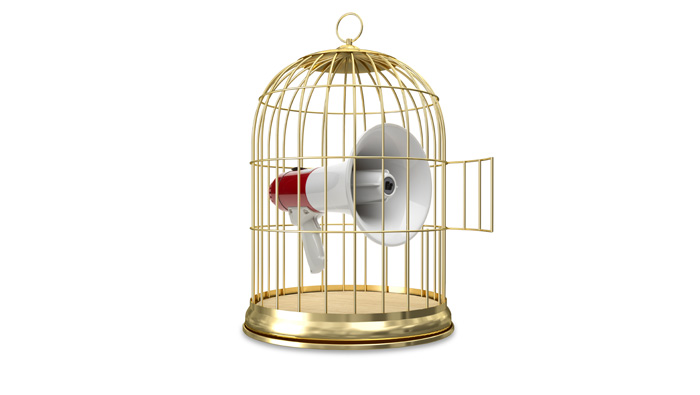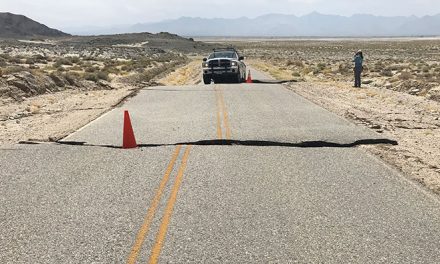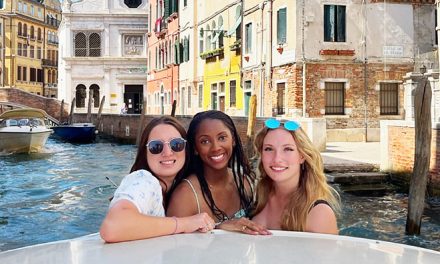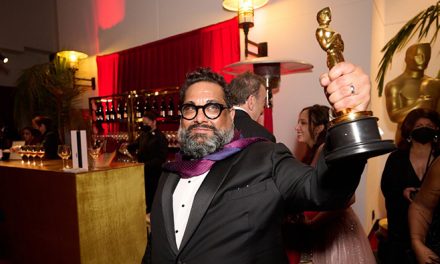
What Is Free Speech, Anyway?
When Elon Musk purchased Twitter last year, some praised the move as a win for free speech. The issue of free speech is a frequent topic of national debate, invoked in conversations both about perceived censorship on social media and the dangers of misinformation.
This constitutional right is enshrined in the First Amendment, but what exactly does that mean and how far does one’s right extend?
“One thing people frequently get wrong about the First Amendment is the idea that you have a right to speak,” said Ashutosh Bhagwat, a UC Davis constitutional law professor who specializes in First Amendment issues. “The constitutionally protected right is not a right to speak; it’s a right to be free of government restrictions on your speech. For that reason, it’s incoherent to say Twitter or Facebook limit your right to free speech.”
An individual’s right to free speech is very broad, with a few exceptions that include threats, obscenity and incitement to violence. But companies like Facebook and Twitter also have a right to free speech.
“Facebook, Instagram and Twitter all have policies that prohibit hate speech,” said Bhagwat. “They can do that because they are not the government. Hate speech is fully protected by the First Amendment.”
Bhagwat said the law and the courts have not yet come to terms with the internet and social media. Social media provides the platform for anyone to easily share content with people from around the world. But it also provides a new ability for anyone to defame people, transmit lies or incite to violence. Consider that Facebook boasts nearly 2 billion daily active users and Twitter has more than 200 million.
Another issue is that many different types of speech are considered equal under the law. Bhagwat referenced a number of legal cases that reinforced free speech protections for depictions of animal cruelty (United States v. Stevens, 2010), violent video games (Brown v. Entertainment Merchants Association, 2011) and deliberate lying (United States v. Alvarez, 2012).
“Speech about the next election and who to vote for or what we should do about inflation are viewed the same under the law as non-consensual pornography,” he said. “The Supreme Court doesn’t have a way to distinguish between speech that does harm and speech that doesn’t.”
Bhagwat argued that there should be some gauge to judge speech that does harm.
The free speech debate becomes more complicated on college campuses. The First Amendment doesn’t just limit what Congress can do; it also applies to public institutions like UC Davis and to its professors.
“As a public university, we can’t protect speech at any cost whatsoever. Free speech is enormously important to us, but so too are other values like advancing knowledge and ensuring inclusion,” said Brian Soucek, a UC Davis law professor and a recent fellow at UC’s National Center for Free Speech and Civic Engagement.
“When we hear people talking about the marketplace of ideas, where free speech is not constrained — like parks, sidewalks and traditional spaces — hate speech is allowed. False ideas are not regulated. People can be intemperate and hostile and rude and offensive. All of that is allowed,” he said.
There’s no shortage of those sorts of places to speak your mind, including on campus, Soucek said, but the university also has a mission to serve the diverse state of California.
“If universities were just internet chatboards, what would be the use?” Soucek said. “We want people from all backgrounds and political persuasions to feel equally free to speak their minds and, more importantly, to learn from others.”
College campuses are unique in that different spaces have different rules and varying degrees of free speech protection. Soucek identified three types of spaces, which he calls the quad, the bulletin board and the classroom.
The “quad” represents public spaces where people gather, discussions are wide open and speech has the greatest protection under the First Amendment. This includes the UC Davis Quad, but also sidewalks, streets, parks and other public forums.
The “bulletin board” includes spaces set up by the university for shared expression. In these situations, the university can set limits, such as restricting use to a specific department, but it can’t discriminate because of viewpoint. At UC Davis, past issues with controversial speakers would also fall into this category. The university can decide that student group funding can never be used on outside speakers. But if it allows student group funding to be used on outside speakers, it cannot then prevent a student group from bringing in a speaker with abhorrent views.
The third campus space is the “classroom,” which is more closely managed. Professors guide expression in all sorts of ways that would violate the First Amendment out on “the quad,” Soucek said. These include staying on topic (content discrimination), cold calling students (compelled speech) and grading, which involves viewpoint discrimination.
Soucek said professors have a First Amendment right to make academic judgments about how to run their classes. And he worried about widespread efforts across the country to limit what teachers are able to say on topics like critical race theory and gender identity.
“Academic freedom, which the First Amendment also protects, means that decisions about what and how to teach should be made by experts within the university, not legislators or others outside of it,” he said. Beyond social media and college campuses, the First Amendment plays another important role.
“The reason we protect speech is to protect democracy,” said Bhagwat. “You can’t run a robust democracy without robust discussion. You need wide open discourse and discourse that is sharply critical of leadership and others.”








